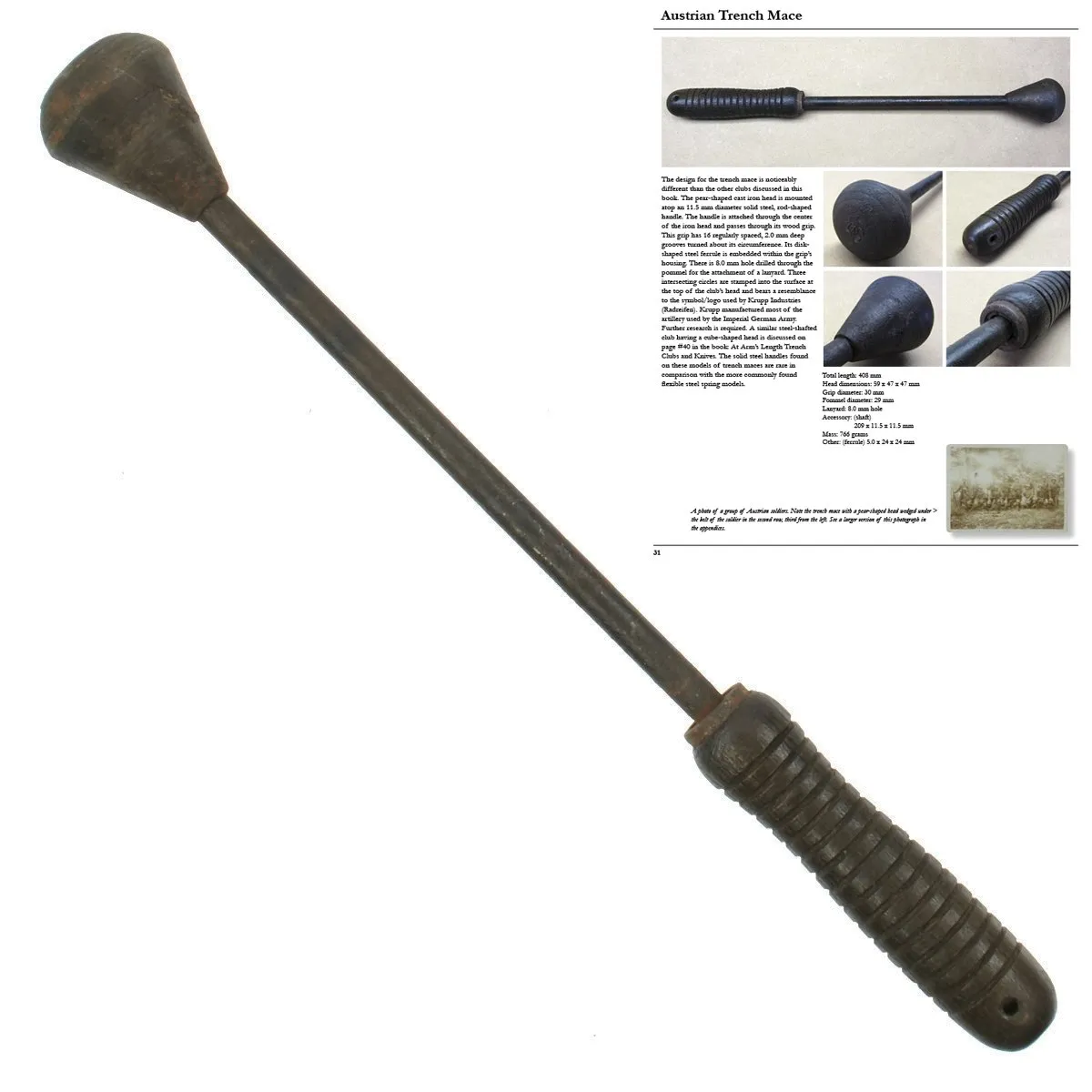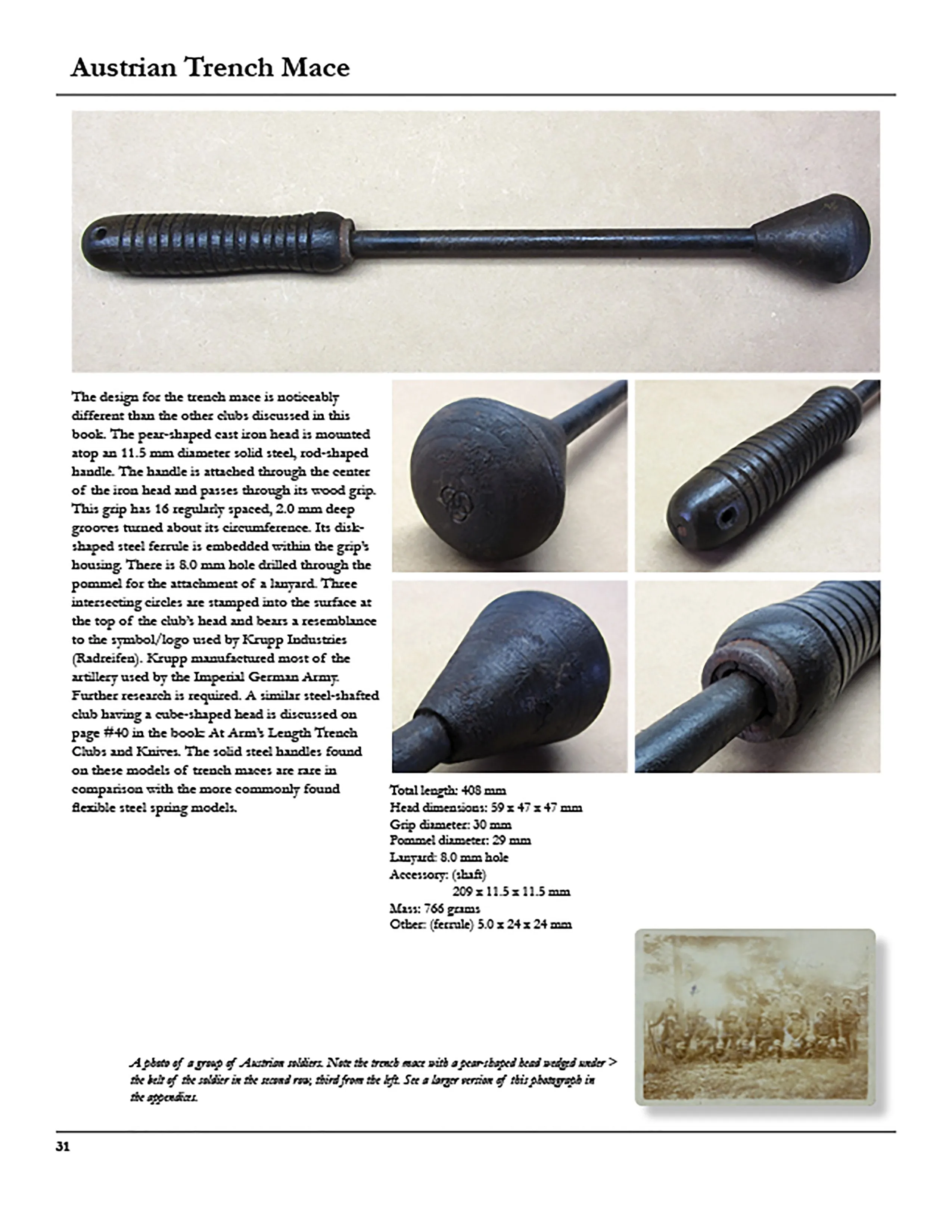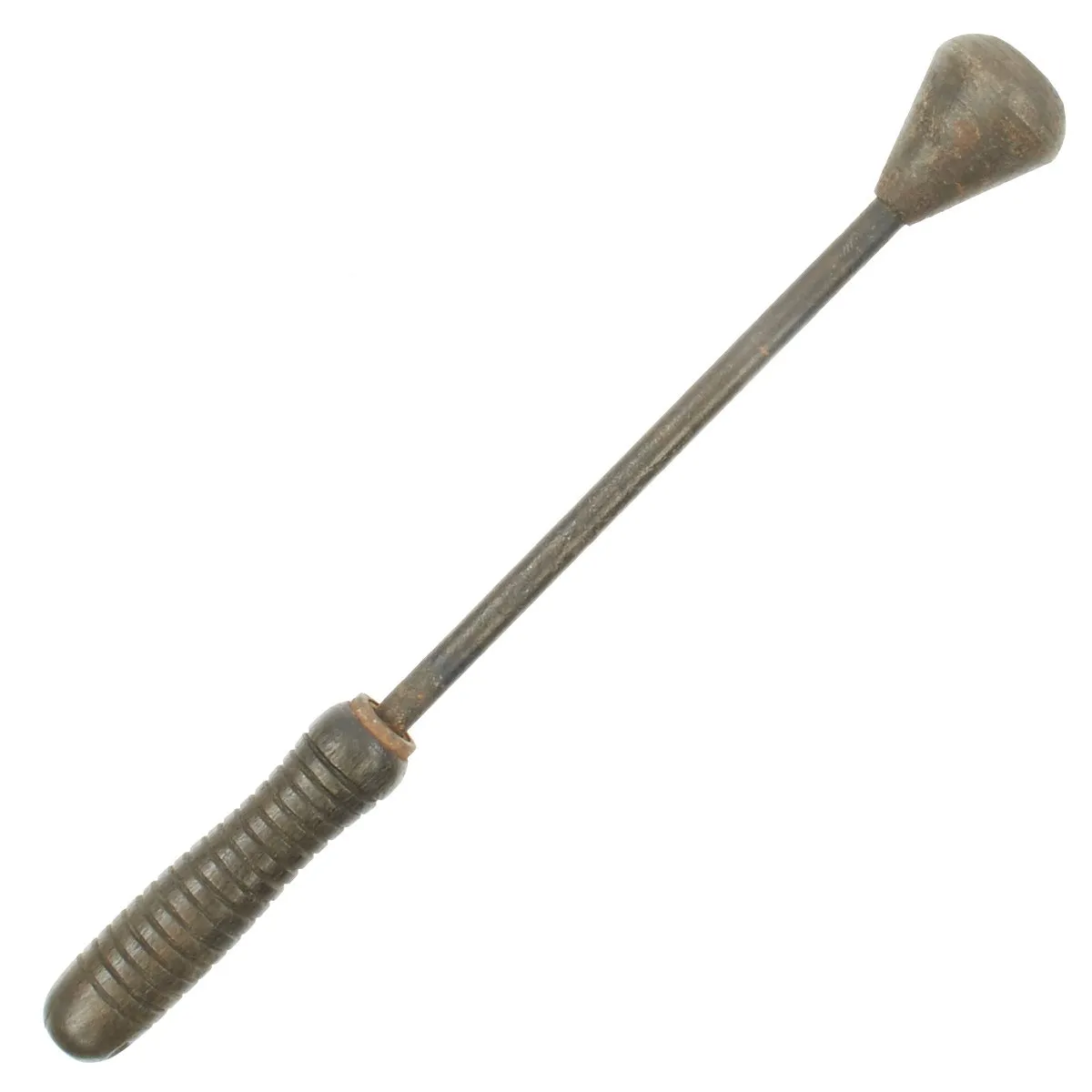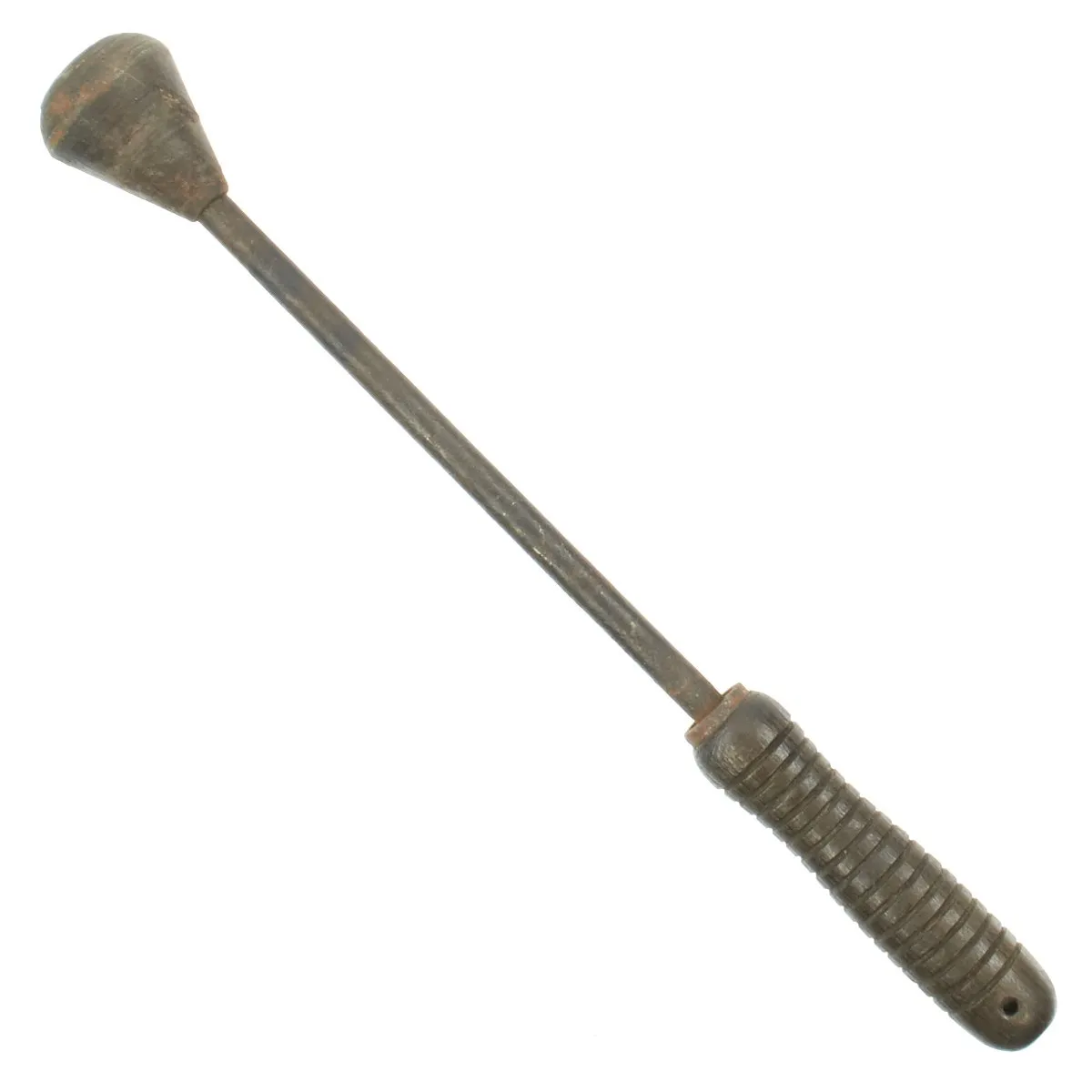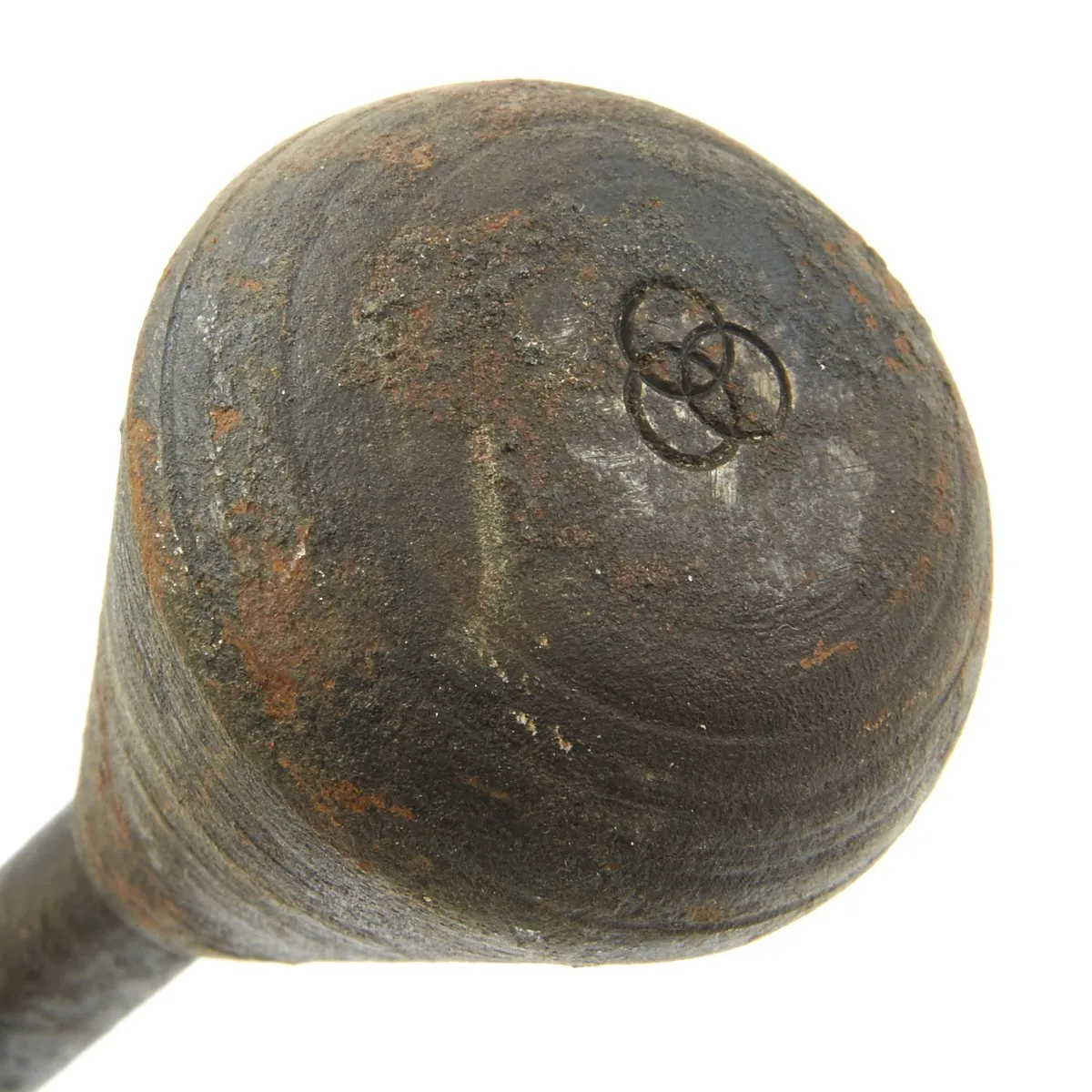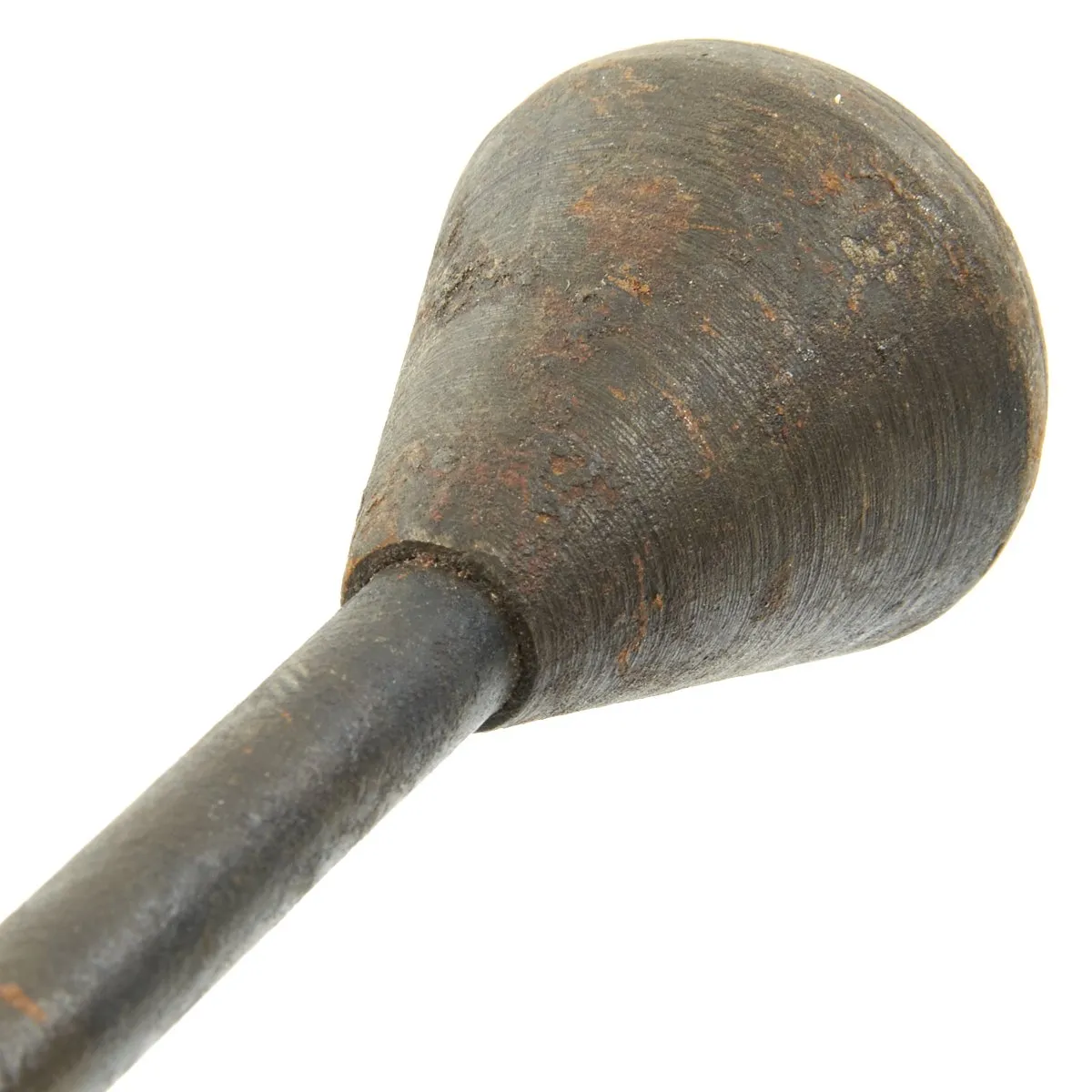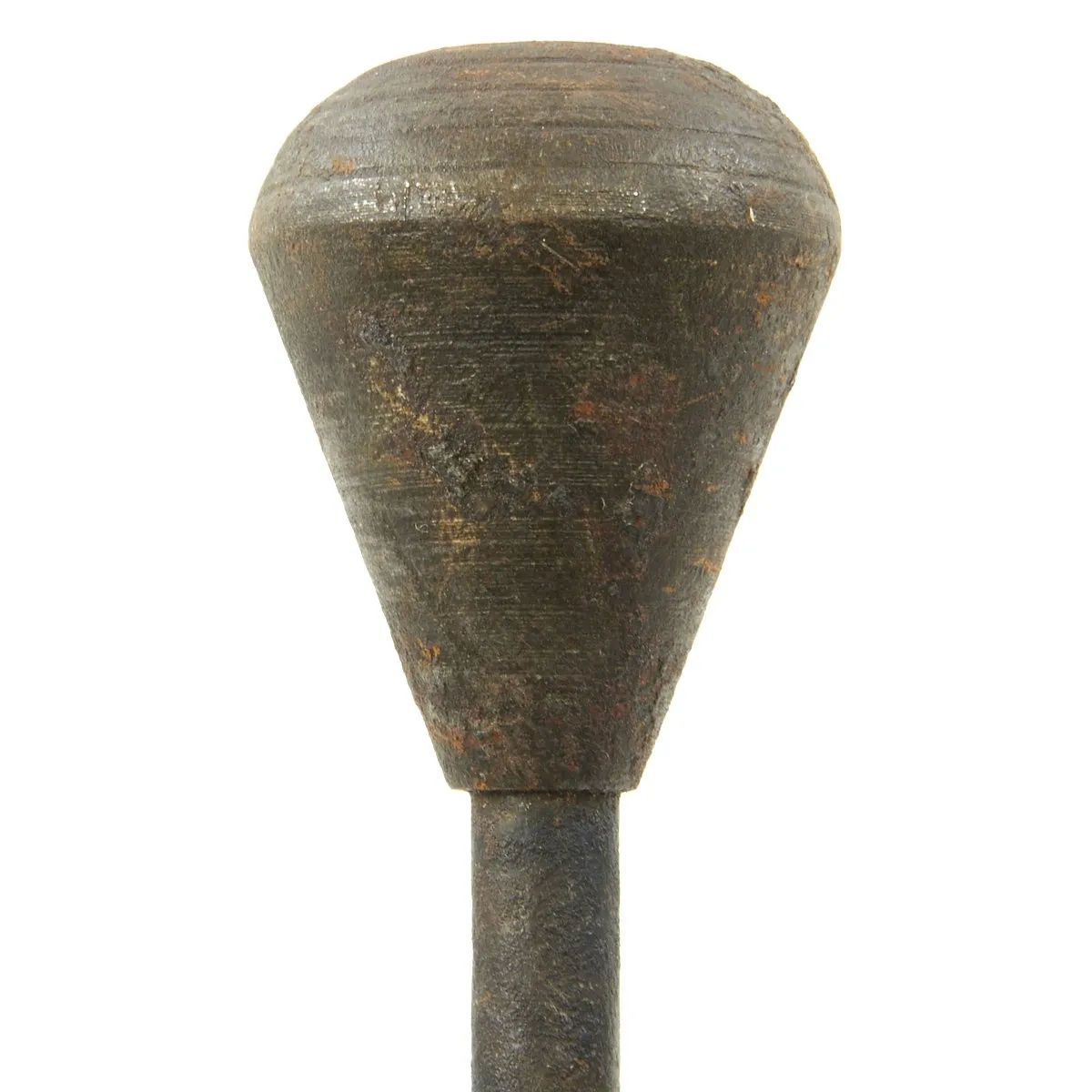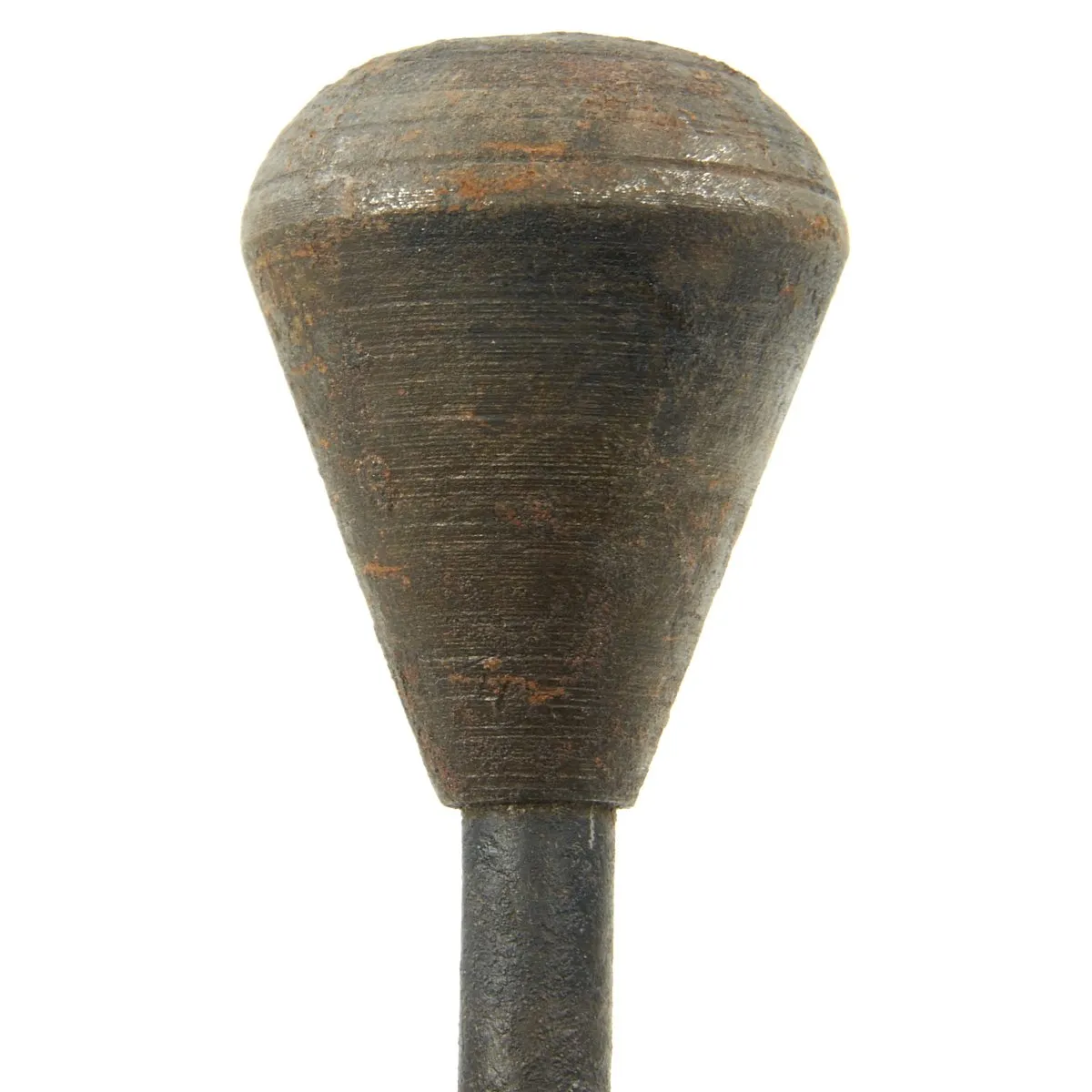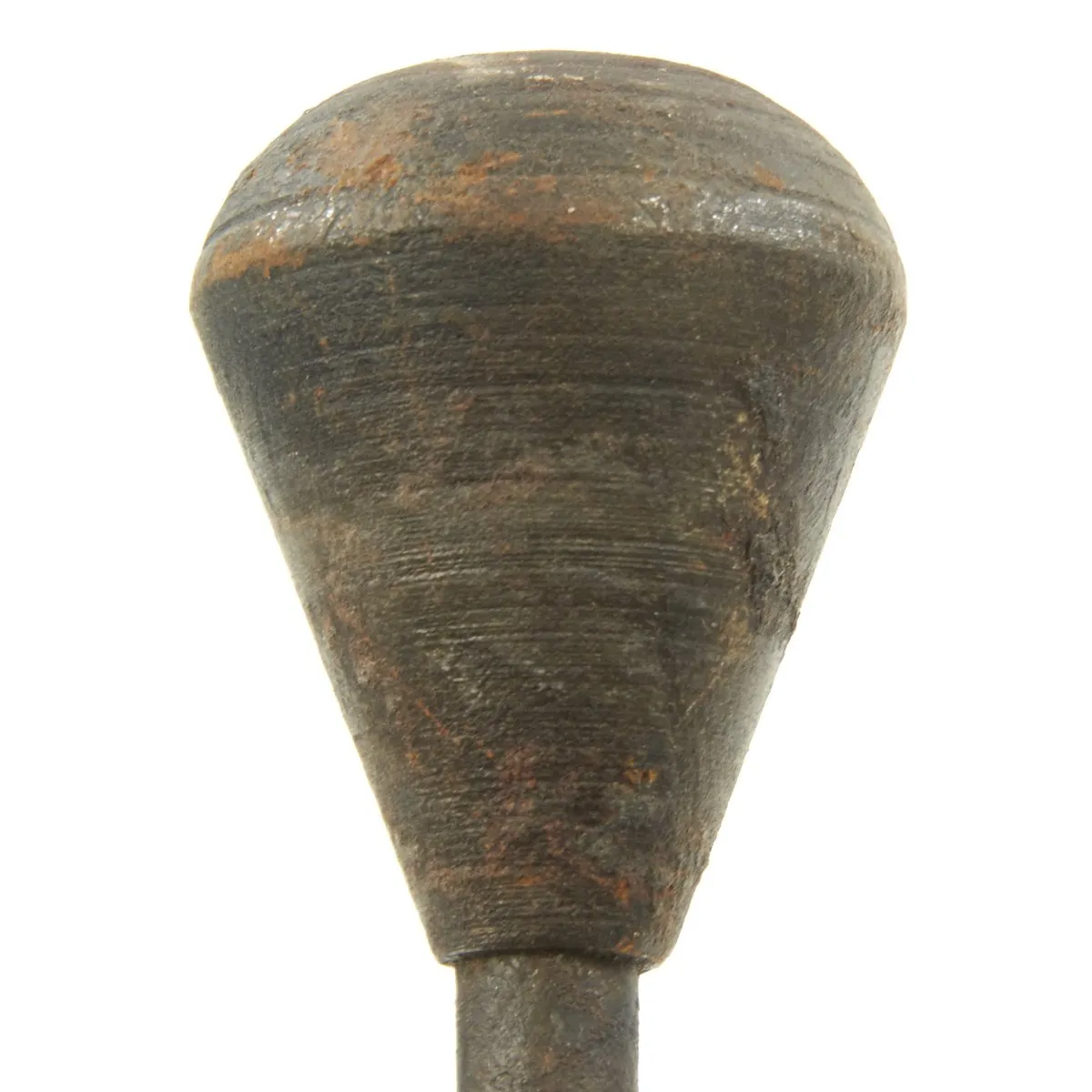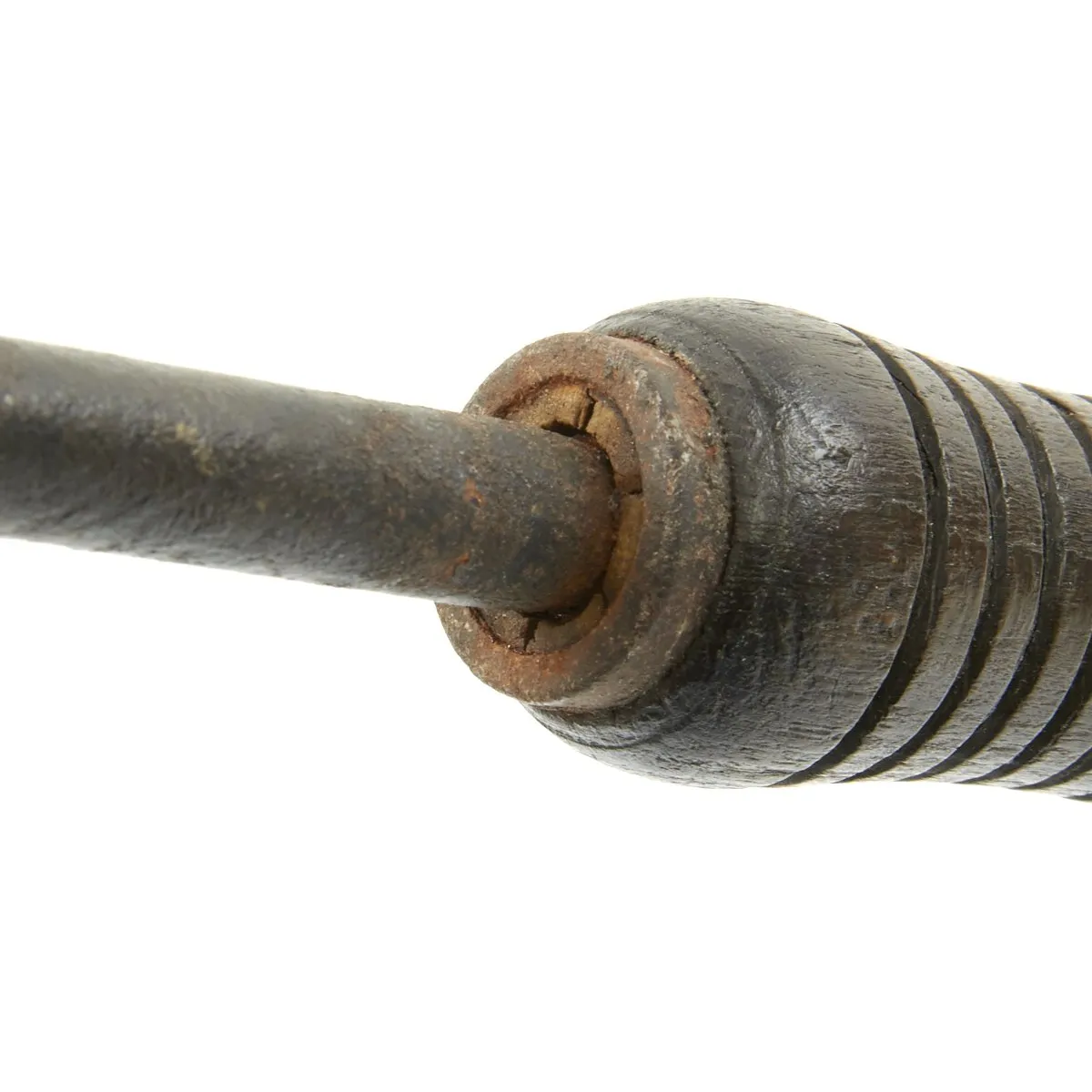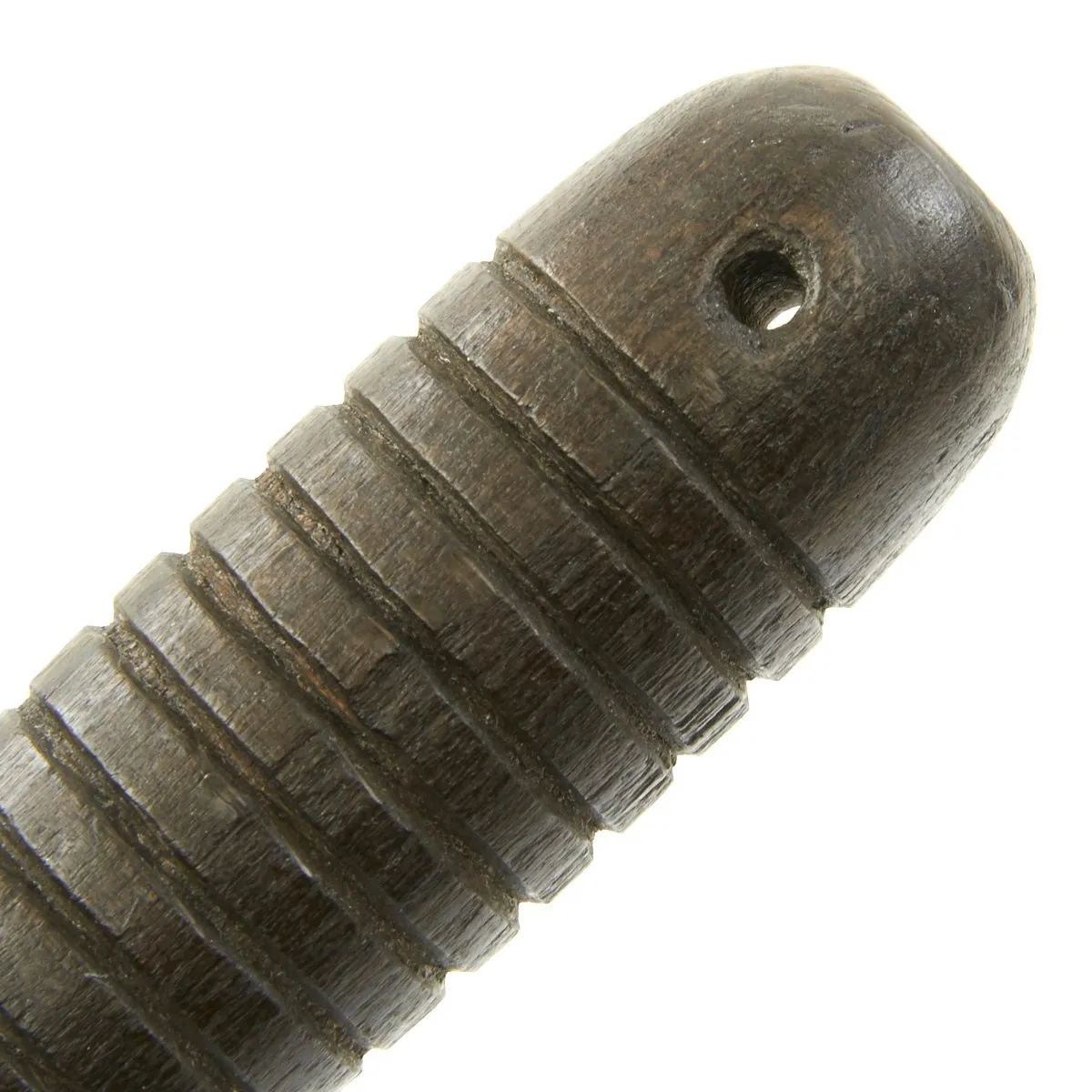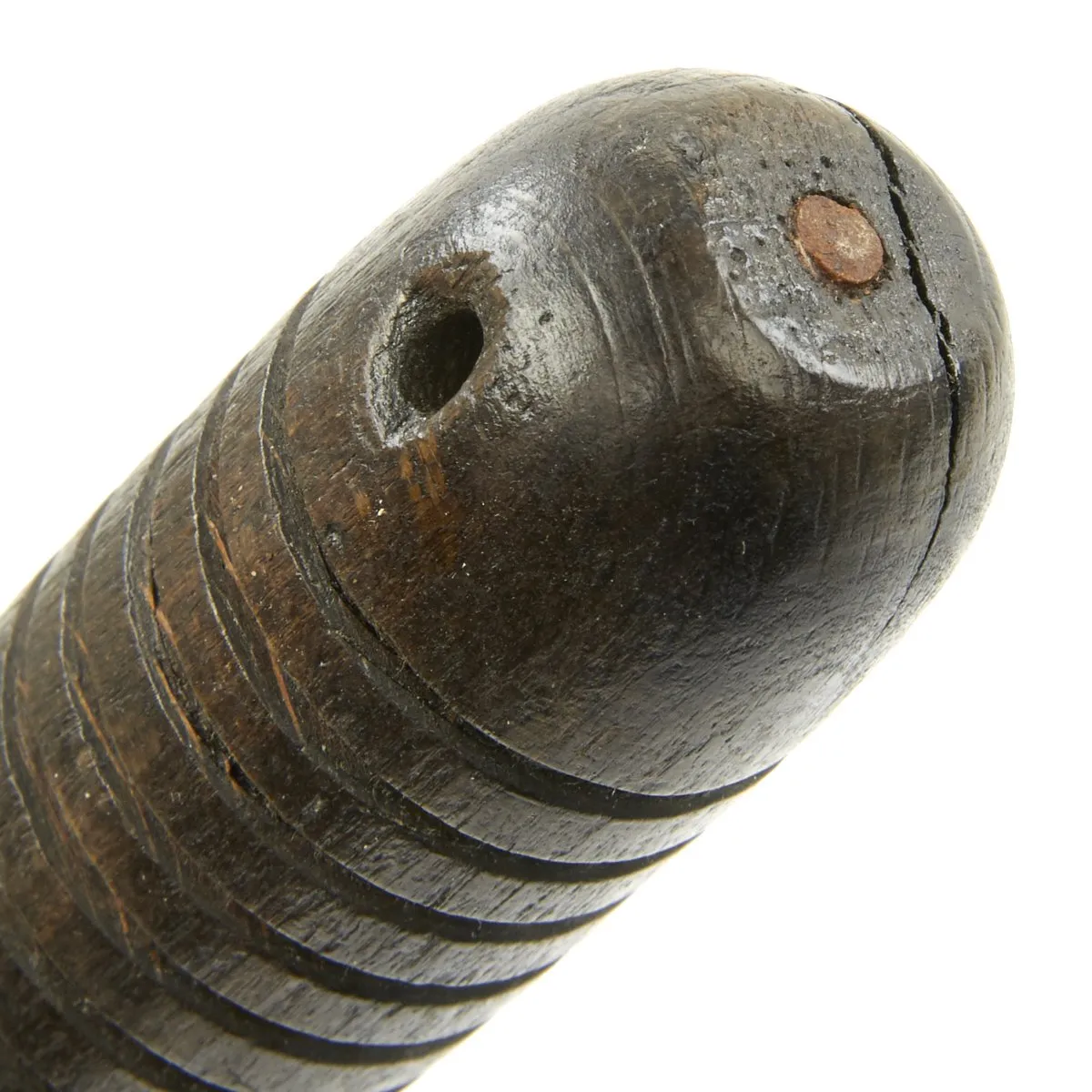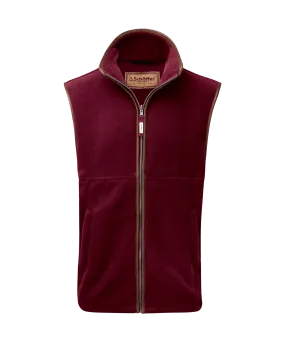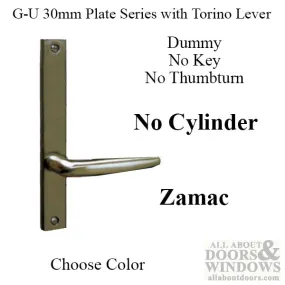Original Item: Only One Available. Purchased from a collection used in At Arm's Length Trench Clubs and Maces Vol. 1 by David F. Machnicki where this very club is featured on page 31! Please note that the attached page image and copy from the book is copyrighted material and the use of the page is done solely by permission of the author.
The design for the trench mace is noticeably different than many known Austrian World War One trench clubs. The pear-shaped cast iron head is mounted atop an 11.5 mm diameter solid steel, rod-shaped handle. The handle is attached through the center of the iron bead and passes through its wood grip. This grip has 16 regularly spaced, 2.0 mm deep grooves turned about its circumference. It's disc-shaped steel ferrule is embedded within the grip's housing. There is 8.0 mm hole drilled through the pommel for the attachment of a lanyard. Three intersecting circles are stamped into the surface at the top of the club's head and bear a resemblance to the symbol/logo used by Krupp Industries (Radreifen). Krupp manufactured most of the artillery used by the Imperial German Army. Further research is required. The solid steel handles found on these models of trench maces are rare in comparison with the more commonly found flexible steel spring models. Total length is 16.5 inches.
Trench raiding clubs were homemade melee weapons used by both the Allies and the Central Powers during World War I. Clubs were used during nighttime trench raiding expeditions as a quiet and effective way of killing or wounding enemy soldiers. The clubs were usually made out of wood. It was common practice to fix a metal object at the striking end (e.g. an empty Mills bomb) in order to maximize the injury inflicted. Another common design comprised a simple stave with the end drilled out and a lead weight inserted, with rows of large hobnails hammered in around its circumference. Most designs had some form of cord or leather strap at the end to wrap around the user's wrist. Bosnian soldiers serving in the Austro-Hungarian army were fond of using maces. They were also used by officers to finish enemy soldiers wounded by poison gas attacks.
Trench clubs were manufactured in bulk by units based behind the lines. Typically, regimental carpenters and metal workers would make large numbers of the same design of club. They were generally used along with other "quiet" weapons such as trench knives, entrenching tools, bayonets, hatchets and pickaxe handles – backed up with revolvers and hand grenades.




